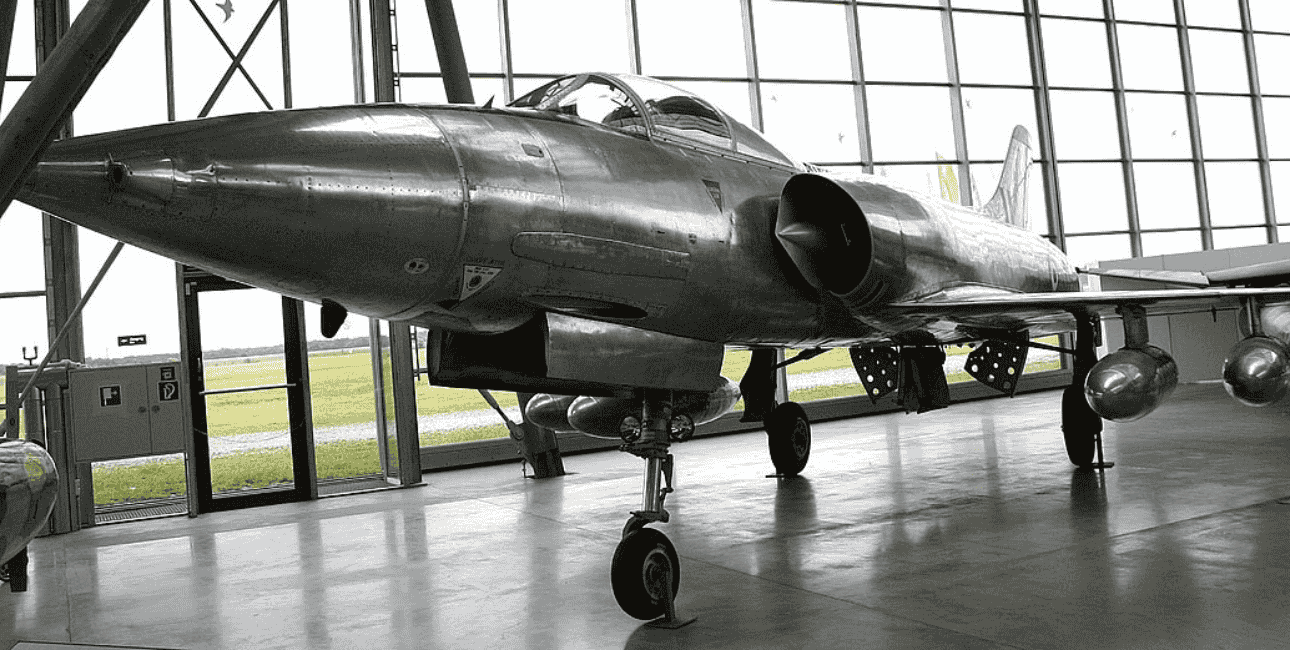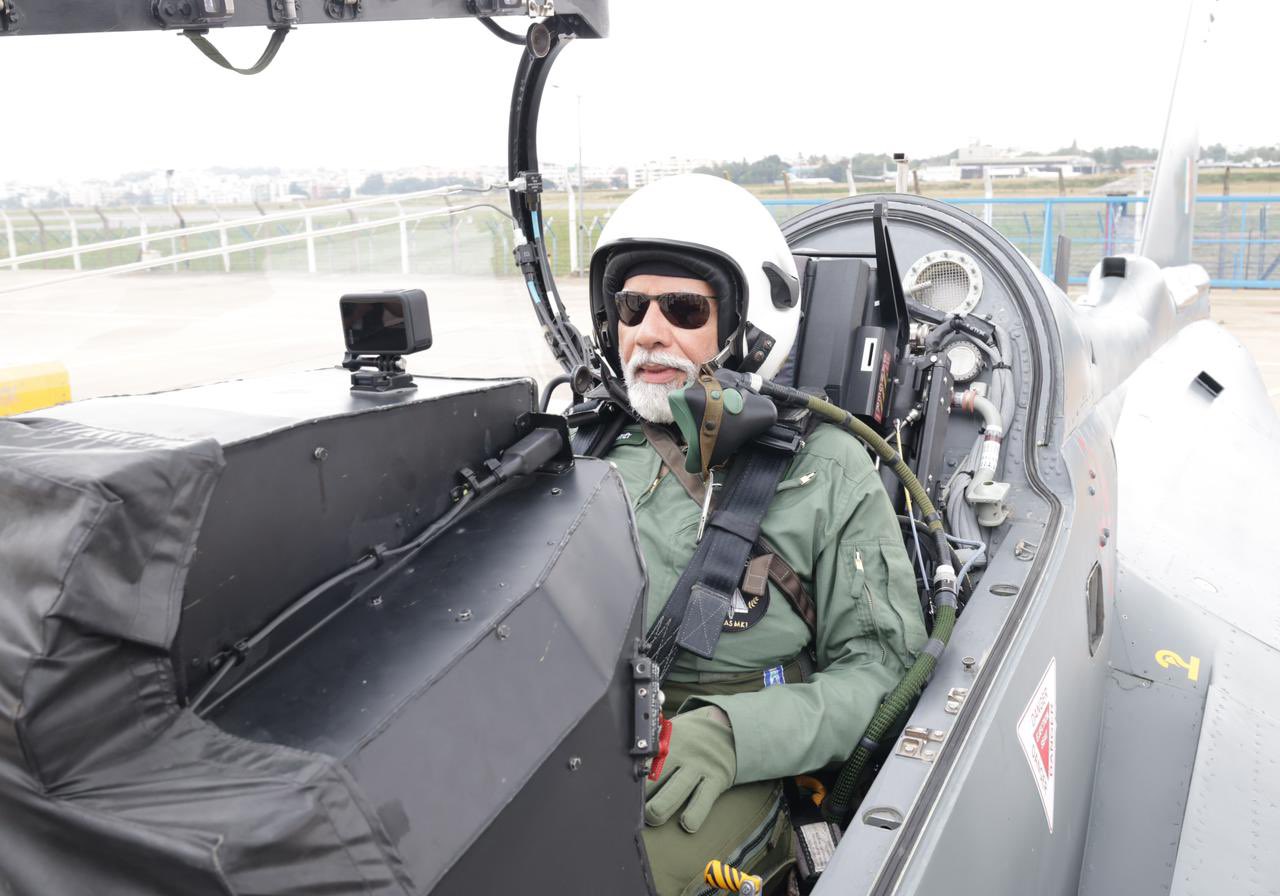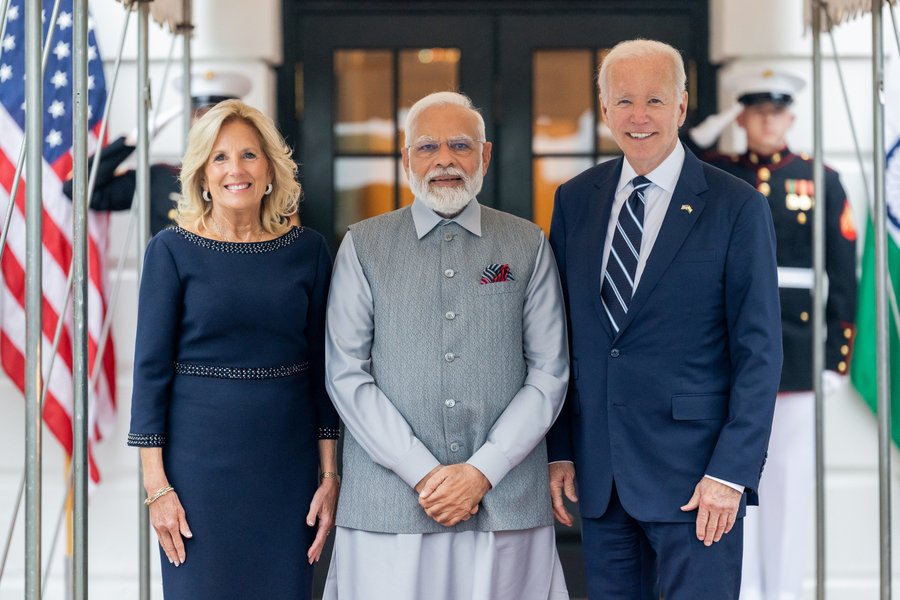In Geopolitical studies, a unipolar world is an outdated concept. For two decades, social scientists have told us that the global order is irreversibly moving towards a multipolar world. The global defense export market is perhaps the last remaining vestige of continued US dominance. However, if there is one critical area where US dominance is still unchallenged, it is the fighter jet engine market.
Notwithstanding the return of national combat aircraft programs in many countries, there is no easy alternative available to American jet engines.
Consider, for example, the curious case of Turkey. In 2019, the country was kicked out of the F-35 Joint Strike Fighter program for purchasing the Russian S-400 Triumf air defense system. However, Ankara decided to challenge US dictates and developed its own fifth-generation fighter jet, TF KAAN.
In February 2024, KAAN conducted its maiden flight. Impressive by any standards. However, there is just one lacuna. Turkey’s so-called indigenous fighter jet prototype is flying on a US-made General Electric F110 turbofan engine.
Similarly, South Korea received accolades for its KF-21 Boramae program, a 4.5-generation multirole fighter that restarted the trend toward developing national combat aircraft.
Spectacular Shootdown! Russian AD Missiles “Hammer” French AASM & Launching Su-27 Aircraft: Reports
The KF-21 successfully completed its maiden flight in July 2022. However, the aircraft is also dependent on GE Aerospace for the supply of jet engines, as General Electric’s F414-GE-400K engine powers it.
There was much talk of using an indigenous engine on the KF-21. However, in 2024, South Korea announced it would continue using the GE engines for the KF-21 for at least one decade.
Meanwhile, Hanwha Aerospace will try to develop an indigenous jet engine for the KF-21 with the exact dimensions of the F414-GE-400 engine. Only time will tell whether this endeavor will be successful.
Achilles Heel Of India’s Fighter Jet Programs
India’s case is somewhat unique among the countries with a national combat aircraft program. India was the first Asian country to develop an indigenous fighter jet, the Hindustan Aeronautics Limited (HAL) designed HF-24 Marut.
The Marut conducted its maiden flight on June 17, 1961, and the first production was officially delivered to the IAF on April 1, 1967. The HF-24 Marut was an absolute beauty with its sleek, pencil-slim contours, elegant swept-wing, and tail configuration attached to a perfect area-ruled fuselage.

Although a very capable fighter, Marut could not fulfill its role as an intercepting, supersonic jet due to the lack of an appropriate power plant. Initially designed to be a supersonic-capable (Mach 2) interceptor aircraft, it would never exceed Mach 1. The limitation was principally due to India’s failure to source a good engine for the fighter jet.
The Marut was powered by the UK-manufactured Bristol Siddeley Orpheus 703 turbojet engines. This underpowered engine meant that Marut was technically obsolete by the time the first production aircraft were completed.
India worked hard to find a sufficiently powerful engine to replace Marut’s Orpheus 703 turbojet engines. The Soviet Klimov K-7 was tried but couldn’t fit the existing airframe. The RD-9F axial flow engine met the same fate. India then tried to co-develop an engine with Egypt—the EL-300. However, the 1967 Arab-Israeli war meant that Egypt abandoned its plans for developing an indigenous fighter and decided to purchase Soviet fighter jets off the shelf.
Pushpindar Singh, author of “Spirits of the Wind: The HAL HF-24 Marut,” says that “the Marut was unbeatable at low-level flying, but it was underpowered for maneuverability…Marut was ahead of its times and had the government persisted with that program, India would have been a generation ahead in the design and development of aircraft today.”
Following India’s first nuclear test in 1974, adverse international public opinion worsened India’s chances of obtaining better engines for the Marut; even spares for its existing Orpheus engines became scarce.
Ultimately, a host of geopolitical factors meant that India could not find an appropriate engine for Marut, and the program was shelved in the 1980s.
Talking about Marut, former IAF pilot Vijainder K Thakur, who himself flew the jet, told an aviation magazine that the greatest myth about Marut is that the aircraft didn’t meet expectations.
“The aircraft met expectations, but the project didn’t! Because MoD (Ministry of Defence) never put into the aircraft the engines that the aircraft was built for,” Thakur said.
Tejas – New Aspirations, Same Old Problems
India’s indigenous fighter jet aspirations made a comeback in the 1980s with the LCA (Light Combat Aircraft) program. However, the LCA Tejas program was marred by the same problems Marut suffered—the lack of an indigenous jet engine.
India’s DRDO (Defence Research and Development Organisation) tasked the Gas Turbine Research Establishment (GTRE) with developing the GTX-37 engine for the LCA. Subsequently, the ambitious Kaveri engine project was sanctioned in late 1989.
Nine full prototype engines and four core engines have been developed, 3,217 hours of engine testing have been carried out, and Altitude Tests and Flying Test Bed (FTB) trials have been completed—but the engines were unsuitable for fighter aircraft. One significant shortfall – instead of the targeted 81 Kn, the engine could only produce 70.4 kN of wet thrust.
However, while attempting to develop the Kaveri engine, HAL simultaneously started designing the Tejas aircraft around the GE-F404 engine. When it became clear that the Kaveri engine could not replace GE engines, India decided to go ahead with the same old route—indigenous fighter aircraft with foreign-sourced engines.
In August 2021, India signed a deal with GE Aerospace for 99 GE-F404 IN20 engines for US$716 Million.
BIG SHIFT! U.S. & Russian Navy Warships Drill Together; China, QUAD Nations Also Join Komodo 2025
IAF’s Never-Ending Wait For Tejas Jets
Sometimes, a picture is worth a million words, and a video is worth a billion words. The recent video of the Indian Air Force Chief Air Chief Marshal A P Singh publicly admonishing HAL at the ongoing Aero India 2025 for its poor track record in delivering aircraft in a timely manner is getting viral on social media.
“HAL is our company; we have all worked there. But I find that HAL is just not in mission mode,” said the IAF chief. “I was promised that when I come here in February, 11 Tejas Mk1As would be ready. And not a single one is ready.”
The IAF chief has been quite vocal about the delay in manufacturing the aircraft, which has reduced the force to 31 fighter squadrons against the sanctioned strength of 42.
In its defense, HAL has cited the delay by GE in supplying the GE-F404 engine on schedule. General Electric is at least two years behind schedule in supplying the promised F404 engines. While the deal for the supply of 99 F404 engines was signed in August 2021, as per the schedule, HAL should have received the initial batch of engines by March 2023. However, this timeline was later pushed to March 2025, throwing the timeline for delivery of Tejas Mk1 and Mk1A in a tizzy.
In October last year, there was much talk in New Delhi about slapping penalties on GE for the repeated delays. While GE blamed “supply chain pressures” for the delays, many in India wondered if the delays were intentional to arm-twist New Delhi or sabotage India’s indigenous aircraft development plans.
Dr. Abhinav Pandya, Founder & CEO of Usanas Foundation, suggested that the delay might serve US interests by destabilizing India’s defense plans. However, he acknowledged that such assertions require more substantial evidence to be credible.

Nonetheless, given that India hardly has any alternative to GE for aircraft engines, and not just Tejas Mk1 and Mk1A but also India’s plans for Tejas Mk2, AMCA (Advanced Medium Combat Aircraft)–India’s planned fifth-generation stealth fighter jet—and Twin Engine Deck Based Fighter (TEDBF), a carrier-based fighter, also depend on GE for engine supplies, India decided not to pursue the penalties route.
In 2023, HAL and GE signed a MoU for the co-production of 99 GE-F414 INS6 engines for the Tejas Mk2. These same engines will also power the initial batch of AMCA fighters. A final deal in this regard is expected by March 2025. However, in December 2024, it was reported that the talks had hit a roadblock as GE demanded US$ 1.5 billion instead of the initially anticipated US$1 billion for the deal.
In short, India’s whole indigenous fighter jet development program is at the mercy of GE.
Modi-Biden Joint Statement And Jet Engines
It is indeed a rare sight when the heads of two of the world’s largest democracies mention a jet engine deal in their joint statement. But this is exactly what happened in June 2023, when Indian Prime Minister Narendra Modi and then US President Joe Biden mentioned the HAL-GE deal to co-produce GE-F414 INS6 engines in India, calling it a “trailblazing initiative.”
“Prime Minister Modi and President Biden hailed the landmark signing of an MoU between General Electric and Hindustan Aeronautics Limited for the manufacture of GE F-414 jet engines in India, for the Hindustan Aeronautics Limited Light Combat Aircraft Mk 2. This trailblazing initiative to manufacture F-414 engines in India will enable greater transfer of U.S. jet engine technology than ever before,” the statement read.

The jet engine deal can again figure prominently in the joint statement during Modi’s upcoming US visit on February 13. This shows the criticality of jet engines for India’s Indigenous fighter jet program. On the other hand, this also shows the tremendous bargaining power the US has over India, notwithstanding Indian rhetoric about maintaining strategic autonomy.
So, does India have no real alternative to US-made jet engines?
The Big Four Exclusive Jet-Engine Club
The US is not the only country that has mastered the complex art of making fighter jet engines. The international arena for manufacturing advanced fighter jet engines is dominated by the exclusive club of the Big Four—the US, Russia, France, and the UK.
From the US, GE Aerospace and Pratt & Whitney are the big players. In the UK, Rolls Royce, and Safran in France. In Russia, United Engine Corporation (UEC) and Kuznetsov Design Bureau are the big players.
However, when it comes to reliability, maintenance costs, and shelf life, there is no competitor to US leadership. India has good strategic partnerships with France and Russia. France has even partnered with India in the development of Shakti helicopter engines. Yet, when it comes to engines for India’s ambitious combat aircraft program, India invariably opts for US-made engines.
Not just India but countries like South Korea and Turkey are developing their combat aircraft around US-made engines, even though they are simultaneously working on their own indigenous jet engines.
Speaking on the issue of GE engines for Tejas, IAF veteran Group Captain Ajay Ahlawat told EurAsian Times: “When the idea of LCA came into being in the 1980s, the DRDO was given this task, and the project of Kaveri was started. The initial plan was that Kaveri, a home-grown engine, would power LCA. But after some years, it looked unlikely that the engine would be ready. In the 1990s, the choices of engines that could fit in LCA were very, very limited. There was GE, Pratt & Whitney, Rolls Royce, and Safran. However, based on the size and shape of LCA, there were essentially two choices – the M88 turbofan engine and the GE engine. The Aeronautical Development Agency (ADA), under the aegis of DRDO, decided to go with GE.
“At that stage, based on the promises made by GTRE and DRDO, it looked like only a short-term fix. It looked like that only the first prototypes would fly with GE engines, and then Kaveri would be available to take the program forward. Unfortunately, Kaveri did not succeed and we are struck with GE engines.”
For the Tejas, Russian Klimov RD-33 and European Eurojet EJ-2000 engines were also considered. However, RD-33, which powers MiG-29, was considered too smokey and unreliable. EJ-2000 was rejected because the initial Tejas prototypes were designed around GE engines, and integrating EJ-2000 would have required redesigning the aircraft, which would have further delayed the project.
Conclusion
Many countries are investing in indigenous combat aircraft programs. By the 2030s, many Asian countries could be flying indigenously developed combat aircraft, boosting their self-reliance in defense production and reducing their dependence on Western technology.
However, while some countries have successfully designed and developed their own combat aircraft, they still rely on Western technology, particularly US technology, for combat jet engines. Russian and Chinese (Shenyang WS-10 “Taihang”) jet engines are available but are considered less reliable than US-made jet engines.
In conclusion, it can be safely said that the US dominance in the critical area of combat jet engines will last for at least another decade.
- Sumit Ahlawat has over a decade of experience in news media. He has worked with Press Trust of India, Times Now, Zee News, Economic Times, and Microsoft News. He holds a Master’s Degree in International Media and Modern History from The University of Sheffield, UK. He is interested in studying Geopolitics from a historical perspective.
- He can be reached at ahlawat.sumit85 (at) gmail.com




